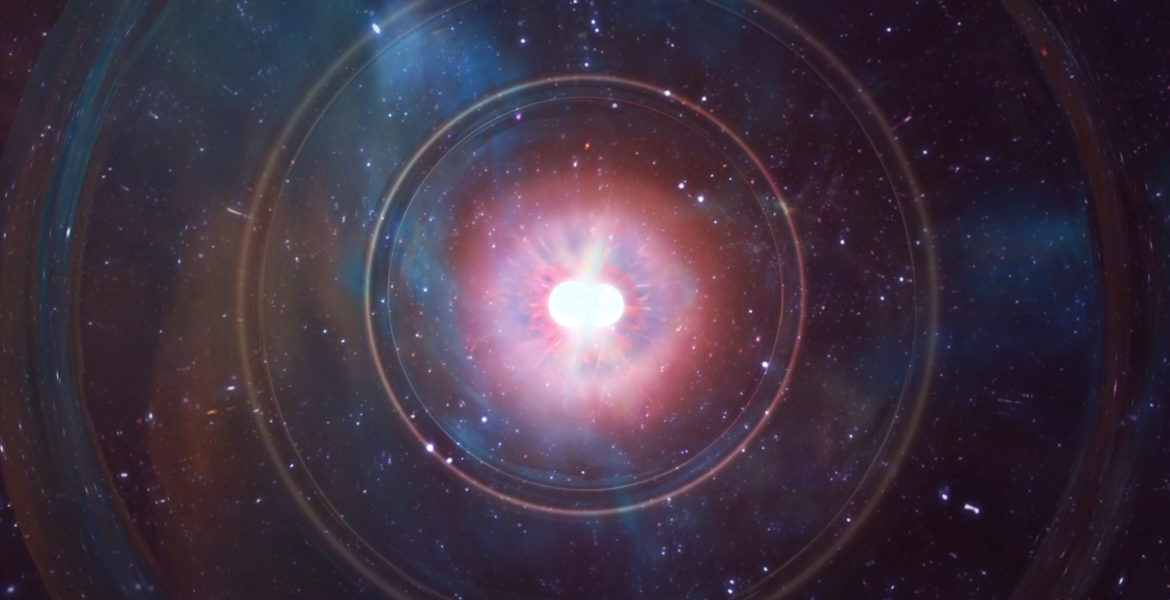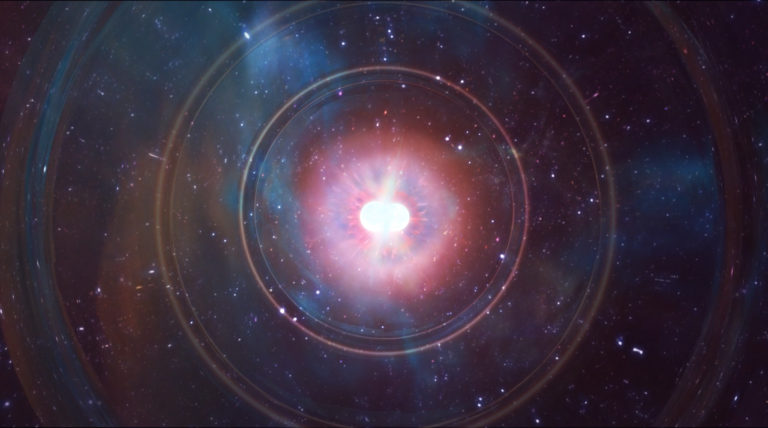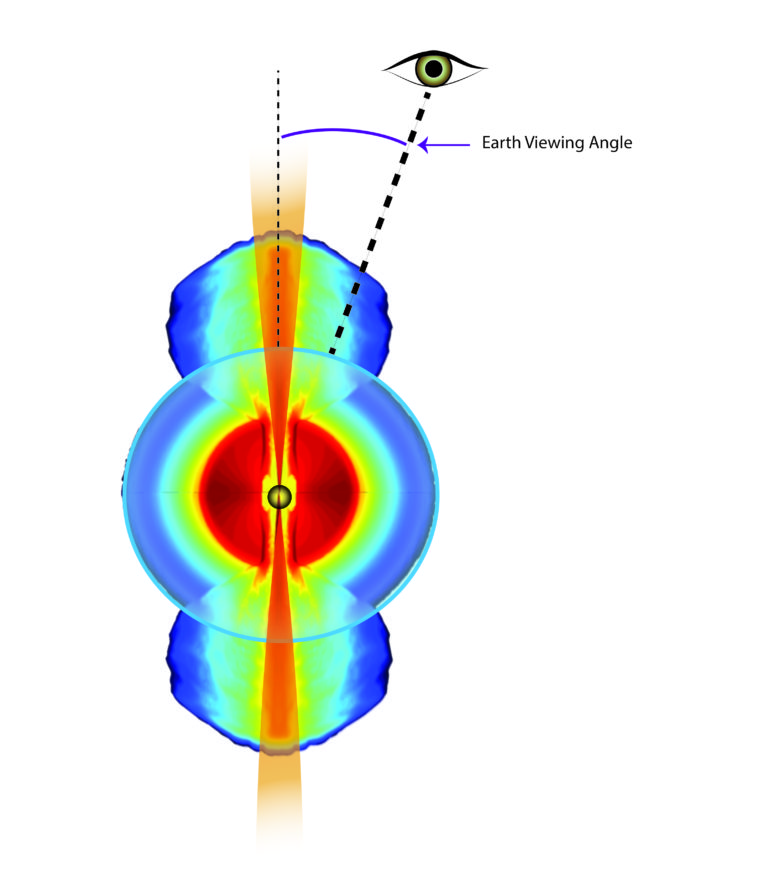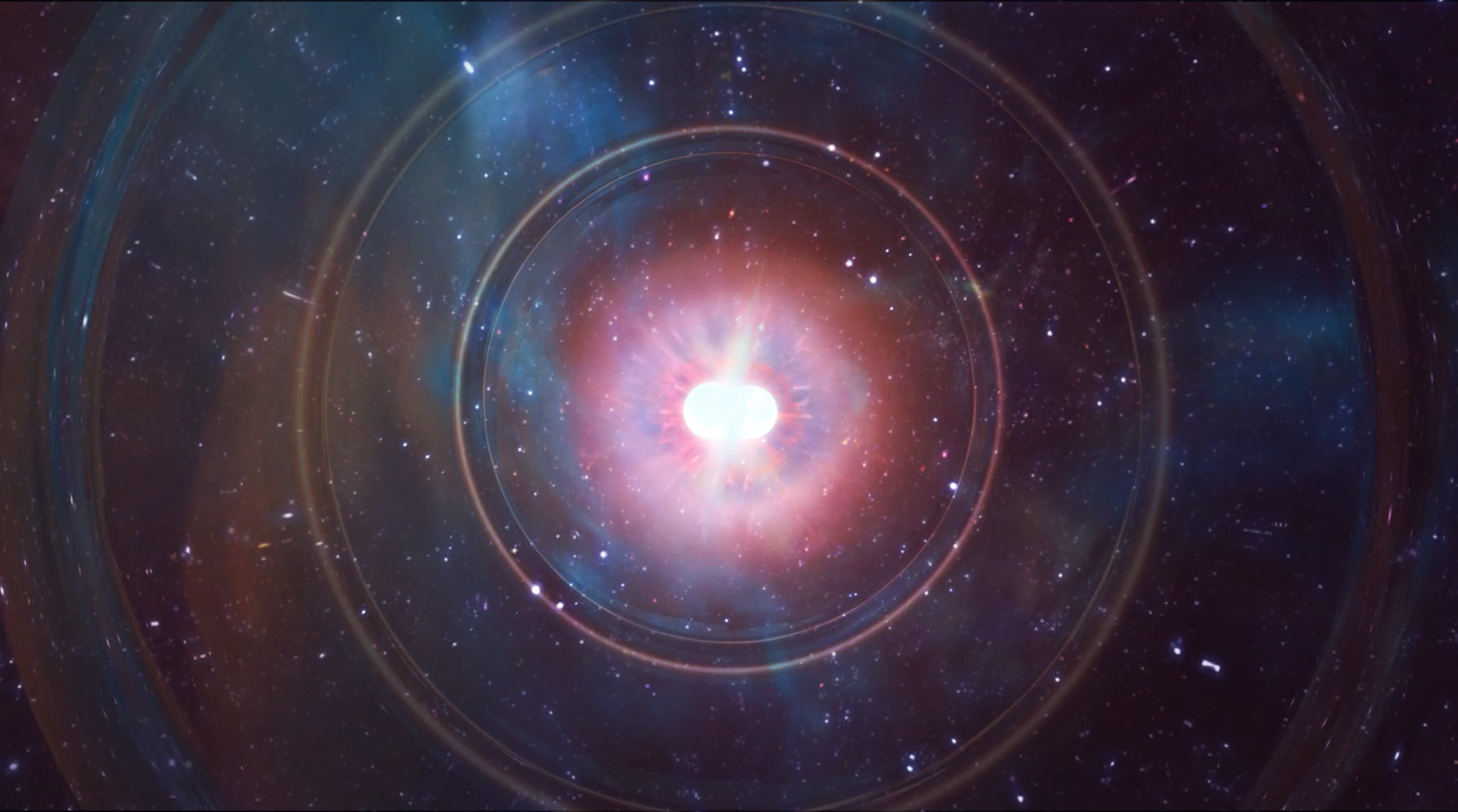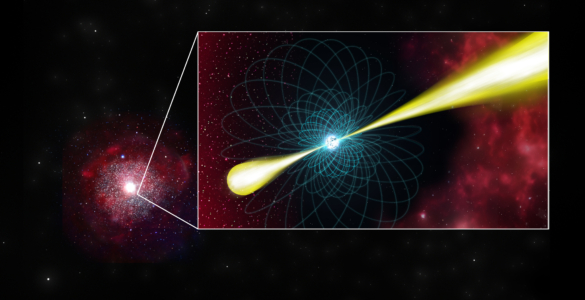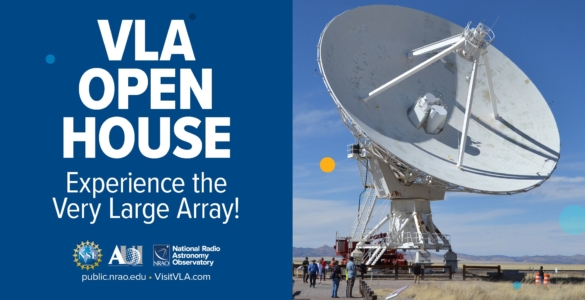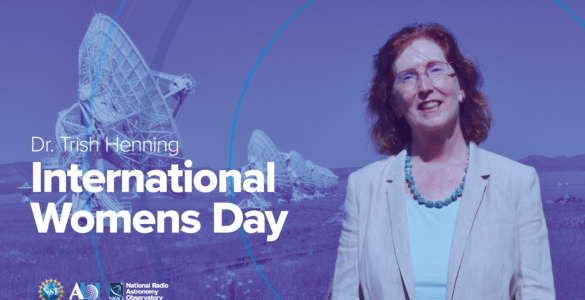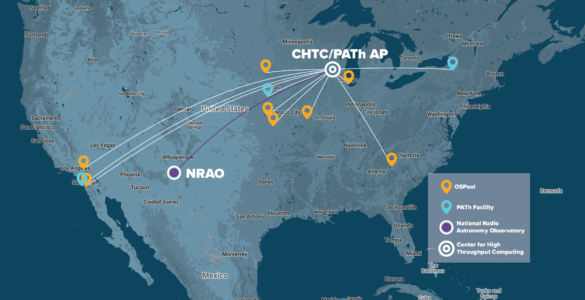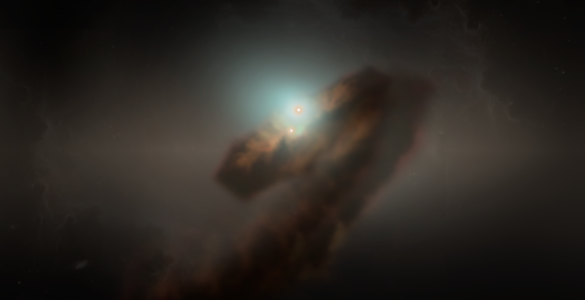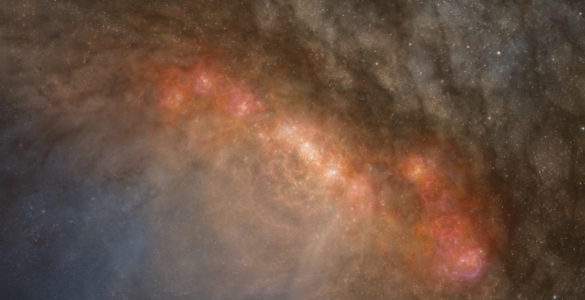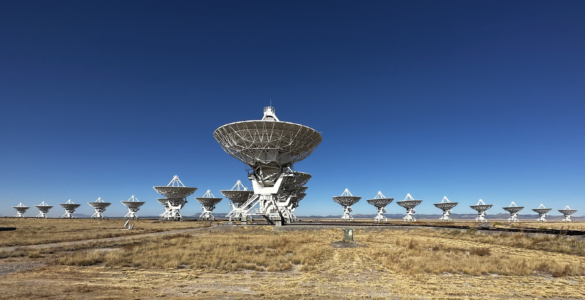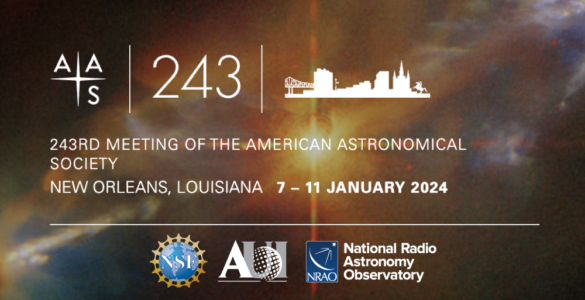Astronomers using National Science Foundation (NSF) radio telescopes have demonstrated how a combination of gravitational-wave and radio observations, along with theoretical modeling, can turn the mergers of pairs of neutron stars into a “cosmic ruler” capable of measuring the expansion of the Universe and resolving an outstanding question over its rate.
The astronomers used the NSF’s Very Long Baseline Array (VLBA), the Karl G. Jansky Very Large Array (VLA) and the Robert C. Byrd Green Bank Telescope (GBT) to study the aftermath of the collision of two neutron stars that produced gravitational waves detected in 2017. This event offered a new way to measure the expansion rate of the Universe, known by scientists as the Hubble Constant. The expansion rate of the Universe can be used to determine its size and age, as well as serve as an essential tool for interpreting observations of objects elsewhere in the Universe.
Two leading methods of determining the Hubble Constant use the characteristics of the Cosmic Microwave Background, the leftover radiation from the Big Bang, or a specific type of supernova explosions, called Type Ia, in the distant Universe. However, these two methods give different results.
“The neutron star merger gives us a new way of measuring the Hubble Constant, and hopefully of resolving the problem,” said Kunal Mooley, of the National Radio Astronomy Observatory (NRAO) and Caltech.
The technique is similar to that using the supernova explosions. Type Ia supernova explosions are thought to all have an intrinsic brightness which can be calculated based on the speed at which they brighten and then fade away. Measuring the brightness as seen from Earth then tells the distance to the supernova explosion. Measuring the Doppler shift of the light from the supernova’s host galaxy indicates the speed at which the galaxy is receding from Earth. The speed divided by the distance yields the Hubble Constant. To get an accurate figure, many such measurements must be made at different distances.
When two massive neutron stars collide, they produce an explosion and a burst of gravitational waves. The shape of the gravitational-wave signal tells scientists how “bright” that burst of gravitational waves was. Measuring the “brightness,” or intensity of the gravitational waves as received at Earth can yield the distance.
“This is a completely independent means of measurement that we hope can clarify what the true value of the Hubble Constant is,” Mooley said.
However, there’s a twist. The intensity of the gravitational waves varies with their orientation with respect to the orbital plane of the two neutron stars. The gravitational waves are stronger in the direction perpendicular to the orbital plane, and weaker if the orbital plane is edge-on as seen from Earth.
“In order to use the gravitational waves to measure the distance, we needed to know that orientation,” said Adam Deller, of Swinburne University of Technology in Australia.
Over a period of months, the astronomers used the radio telescopes to measure the movement of a superfast jet of material ejected from the explosion. “We used these measurements along with detailed hydrodynamical simulations to determine the orientation angle, thus allowing use of the gravitational waves to determine the distance,” said Ehud Nakar from Tel Aviv University.
This single measurement, of an event some 130 million light-years from Earth, is not yet sufficient to resolve the uncertainty, the scientists said, but the technique now can be applied to future neutron-star mergers detected with gravitational waves.
“We think that 15 more such events that can be observed both with gravitational waves and in great detail with radio telescopes, may be able to solve the problem,” said Kenta Hotokezaka, of Princeton University. “This would be an important advance in our understanding of one of the most important aspects of the Universe,” he added.
The international scientific team led by Hotokezaka is reporting its results in the journal Nature Astronomy.
The National Radio Astronomy Observatory is a facility of the National Science Foundation, operated under cooperative agreement by Associated Universities, Inc.
###
Media Contact:
Dave Finley, Public Information Officer
(575) 835-7302
dfinley@nrao.edu


